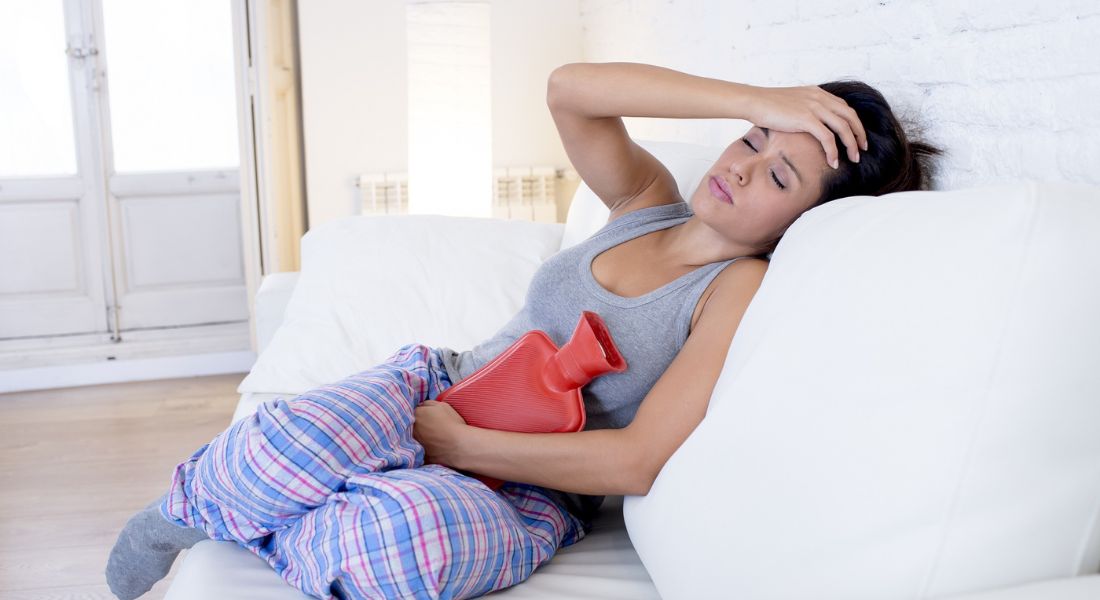Categories
Painful Periods
Oct 21, 2022
Cramps occur from contractions in the uterus, which are part of the menstrual process. The medical terminology for menstrual cramps is dysmenorhea. Dysmenorrhea can be primary or secondary.
Primary dysmenorrhea involves no physical abnormality and usually begins within three years after you begin menstruating. With primary dysmenorrhea, muscle contractions are often normal and the cause of the pain is some underlying biologic factor that only affects menstrual lining. What is thought to happen is that normal body chemicals called prostaglandins build up in the lining of the uterus. Prostaglandins help the uterus to squeeze (contract) and shed the lining of the uterus during a period. In women with period pain there seems to be a build-up of too much prostaglandins, or the uterus may be extra sensitive to the prostaglandins. This may cause the uterus to contract too hard, which reduces the blood supply to the uterus. This can lead to pain.
Secondary dysmenorrhea involves an underlying physical cause, such as endometriosis or uterine fibroids.
About half of menstruating women experience primary dysmenorrhea. Onset usually occurs two to three years after the periods have started. The pain typically develops when the bleeding starts and continues for 32 to 48 hours. Signs and symptoms of dysmenorrhea, whether primary or secondary, may include:
• Dull or throbbing pain in your lower abdomen • Pain that radiates to your lower back and thighs
Less common signs and symptoms include:
• Nausea and vomiting
• Loose stools
• Sweating
• Dizziness
To create a nourishing environment for a fertilized egg, the female sex hormone estrogen causes your uterine lining (endometrium) to thicken every month. Soon after, a follicle — a tiny sac in your ovary that contains a single egg (ovum) — ruptures and releases its egg (ovulation). If the egg becomes fertilized by contact with a sperm on its way to your uterus, the egg implants in the lining of the uterus. However, most often the unfertilized egg passes through your uterus and out of your body. Shortly thereafter, your uterus releases the lining, and your menstrual flow begins.
To help release this lining of the womb the uterine muscle contracts and pushes it out. This leads to cramping.
Some simple steps that you can take:
• Warmth: you may find it soothing to hold a hot water bottle against your lower abdomen, or to have a hot bath. The pain often does not last long, and this may be all that you need. (Be careful not to burn yourself with a hot water bottle which is too hot.) A warm bath or shower may also help.
• Drink warm milk
• Do light circular massage with your fingertips around your lower abdomen.
• Walk or exercise regularly
• Follow a diet rich in complex carbohydrates such as whole grains, fruits, and vegetables, but low in salt, sugar, alcohol, and caffeine.
• Eat light but frequent meals.
• Try simple pain killers like paracetamol and if there is no relief use anti-inflammatory medicine, such as ibuprofen.
• Practice relaxation techniques like meditation or yoga
• Try vitamin B-6, calcium, and magnesium supplements, especially if your pain is from PMS
• Keep your legs elevated while lying down. Or lie on your side with knees bent.
If these self-care measures do not work, consult your doctor.She may prescribe medications such as: Stronger anti-inflammatories these can greatly ease the pain
They work by blocking the effect of the prostaglandin chemicals that are thought to cause the pain. Some tips when using an anti-inflammatory include the following:
Take the first dose as soon as your pain begins, or as soon as the bleeding starts, whichever comes first. Some doctors advise to start taking the tablets the day before your period is due. This may prevent the pain from building up.Take the tablets regularly, for 2-3 days each period, rather than 'now and then' when pain builds up. Side-effects are uncommon if you take a non-steroidal anti-inflammatory for just a few days at a time, during each period. Birth control pills This is an option if you also need contraception. Painful or heavy periods are much less likely if you take 'the pill'. This is because the pill causes the lining of the uterus to become thin, and the amount of prostaglandin is much reduced.







